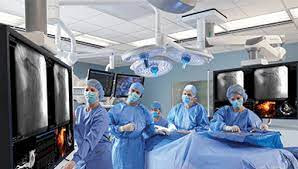Operating Room Integration Market predicted to increase at an 11.0 percent compound annual growth rate (CAGR) from 2020 to 2027
The global operating room integration market was worth USD 1.4 billion in 2019 and is predicted to increase at an 11.0 percent compound annual growth rate (CAGR) from 2020 to 2027. Increasing demand for technologically sophisticated applications, an increase in the number of surgical operations, congestion in operating rooms (OR), patient safety concerns in OR, and an increase in the desire for Minimally Invasive Surgeries (MIS) are all driving the market forward. However, in underdeveloped nations, a scarcity of experienced surgeons and a high initial investment cost are limiting expansion.. This high cost is due to the expensive integrated modern technology that is being used in the operating room. Smaller hospitals may struggle to meet the initial investment requirements.
Furthermore, the introduction of new imaging and diagnostic technologies for ORs, rising government support for improving operating room infrastructure or hospital renovation projects, and a growing need to reduce healthcare spending are all driving the industry forward. For example, the Nova Scotia Health Authority invested USD 6.4 million in October 2017 to reduce wait times for hip and knee surgeries. As a result of the funding, the number of orthopaedic procedures has increased.
Furthermore, the authority embraced a patient-centered approach to orthopaedic surgery, which resulted in a more sophisticated utilisation of ORs. Over the projected period, these types of activities are expected to fuel the expansion of the operating room integration market. Furthermore, the market is being fueled by an increase in the number of MIS procedures and their benefits, such as shorter hospital stays and the rapid adoption of integrated systems to reduce OR complexity. The market is also growing due to rising need for optimising surgical workflow in ORs and monitoring, sharing, and storing video-rich content across hospitals..
Component Insights
Due to several benefits linked with its use, the software segment accounted for the greatest revenue share of 54.9 percent in 2019. These integrated software solutions provide continuous communication between multiple operating systems in the OR, streamlining surgical workflows and ensuring ease of use and efficiency.
In addition, organisations are establishing their position in the operating room integration market by implementing ambitious strategies to expand their application portfolio in the field. For example, Stryker's Endoscopy Division launched a programme called "OR of the Future" in 2017.Customers can see how the company's surgical equipment and displays work in operating rooms thanks to holographic technology. The use of operating room integration is expected to increase in the near future as a result of initiatives like these to promote integrated OR technologies.




Comments
Post a Comment